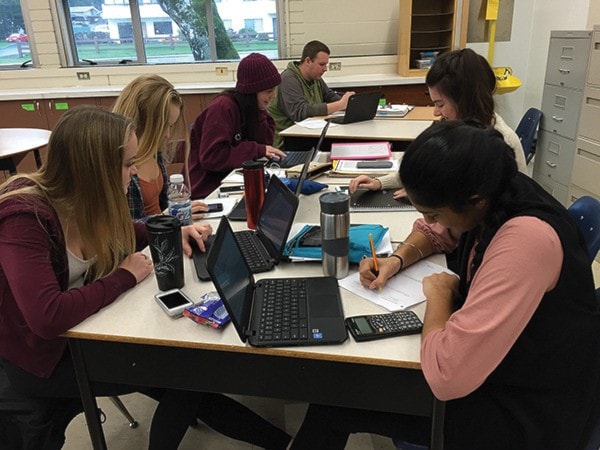At Carihi, Chemistry teacher Thomas Diesch has been at the leading edge of this implementing a new curriculum that was introduced to B.C. schools this fall.
His teaching philosophy is based upon the concept of “blended learning.”
ToDiesch, blended learning involves “leveraging technology to give students choice in the pace, place, and content of their learning”.
The concept is based upon the new curriculum, as well as various other education models that have been applied all over the world.
The new curriculum is built around two facets of learning; content and competencies.
Curricular content is the learning traditionally associated with schools, such as reading, writing, arithmetic, assignments, and tests.
The curricular competencies are new to the curriculum and involve the development of various transferable skills including communication, planning and conducting, processing and analyzing data.
In Diesch’s class, content delivery involves completing daily content lessons online when at home and then applying the content in class.
Students are given some flexibility in assessment, such as when they complete tests, and are encouraged to explore areas of personal interest.
The tools used to implement these changes include the School District 72 72 Ways To Learn program and “Google Apps for Education”.
The apps are a suite of online tools that gives students various ways to demonstrate their learning.
His goal is to “enrich student’s learning of transferable skills and more competency-based learning to prepare them for life after high school”.
These substantial changes have already had an impact on students as they take ownership and responsibility over their learning.
“It hasn’t been easy but they’re starting to see the benefits,” said Diesch.
Diesch envisions further evolution of blended learning in classrooms in the future.
He believes that it “creates the opportunity for a student-led classroom where learners take charge in their own education and develop skills for life long after school”.
